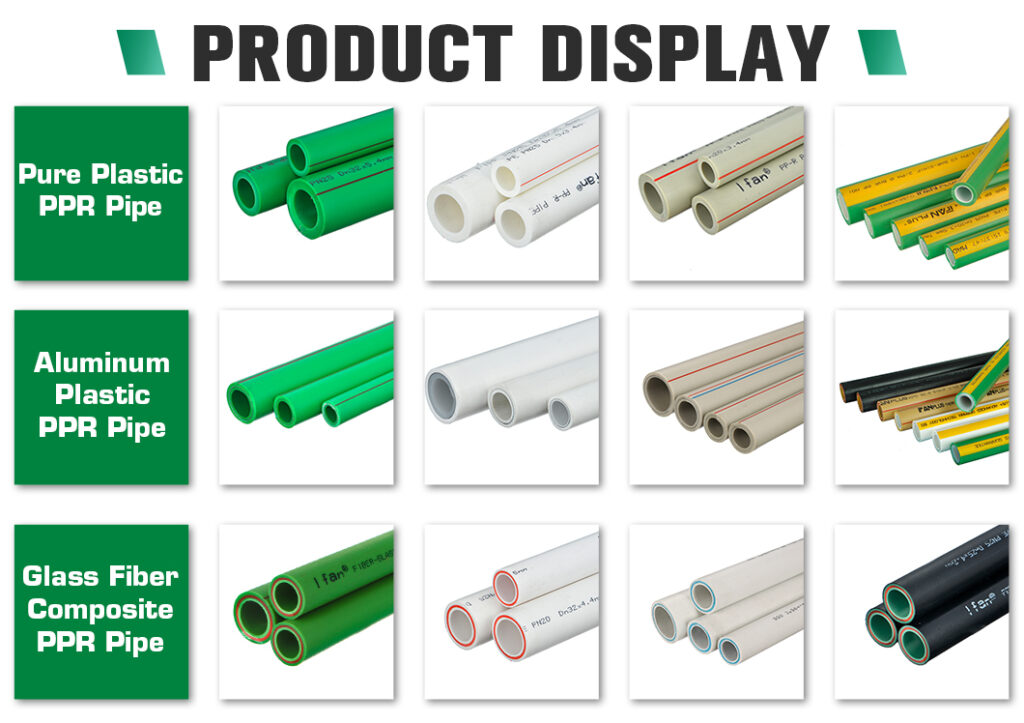PPR pipe is a new type of pipe, which is widely used in construction, chemical industry, drinking water and other fields because of its characteristics of high temperature, high pressure, high strength, smoothness, easy connection and easy installation. There are also different types and structures of PPR pipes. The following is an analysis of the types, structures and usage scenarios of PPR pipes.IFAN factory 30+ years manufacture experience support color/size customization support free sample.Welcome to consult for catalog and free samples.This is our Facebook Website: www.facebook.com
Types of PPR pipes:
Ordinary PPR pipe
Ordinary PPR pipes refer to ordinary pipe materials that are normally used, and are usually used in water supply, drainage, and gas fields. The pipe is characterized by high density, high strength, aging resistance, corrosion resistance, impact resistance, safety and environmental protection.
PPR reinforced tube
PPR reinforced pipe is a pipe made of specially added reinforcing materials, which is more excellent than ordinary pipes in terms of strength and pressure resistance, and is widely used in industries, construction and agriculture.
PPR fiber reinforced pipe
PPR fiber reinforced pipe is a new type of PPR pipe, which adds fiber materials on the basis of raw materials. The biggest feature of this pipe is its high strength, while maintaining the advantages of PPR pipes, it is widely used in high-rise buildings, water supply, heating and floor heating and other fields.

The structure of PPR pipe:
Single layer structure
The single-layer structure is the basic structure of PPR pipes, which is made of one layer of polypropylene material. The structure has the advantages of simplicity, beautiful appearance and moderate price.
Fiber reinforced structure
The fiber-reinforced structure is a PPR pipe with a relatively complex structure. It consists of a multi-layer structure, in which the fiber-reinforced layer is directly connected to the inner and outer layers by heat welding. The advantages of this structure are high strength, impermeability and long service life.
The use scene of PPR pipe:
PPR pipes are suitable for fields such as industry, construction and agriculture. Among them, the water supply field is the most important usage scenario. PPR pipes can replace traditional metal pipes, which have long service life and low maintenance costs, and at the s ame time make the project modular and easy to maintain. PPR pipes can be installed inside the wall or underground, and can be installed indoors and outdoors. It has the characteristics of safety, environmental protection and health.
How to choose PPR tube:
Select materials according to usage scenarios:
Different use scenarios have different requirements for PPR pipes. For example, the water supply field requires relatively high material and strength requirements for PPR pipes, while the drainage field requires pipes with good toughness.
Select according to the pipe diameter:
The diameter of the PPR pipe usually has multiple specifications such as 20mm, 25mm, 32mm, 40mm, 50mm, etc., and the appropriate diameter can be selected according to the needs.
Select according to the pressure and temperature used:
The choice of PPR pipe should also be selected according to the pressure and temperature to be borne. For example, in some high-temperature scenes, high-temperature PPR pipe materials should be selected.
In general, PPR pipe is a high-strength, easy-to-connect and easy-to-install pipe that can be widely used in water supply, drainage, gas, heating and floor heating and other fields. When selecting PPR pipes, it It is necessary to consider comprehensively according to actual needs and usage scenarios in order to obtain the best usage effect.

